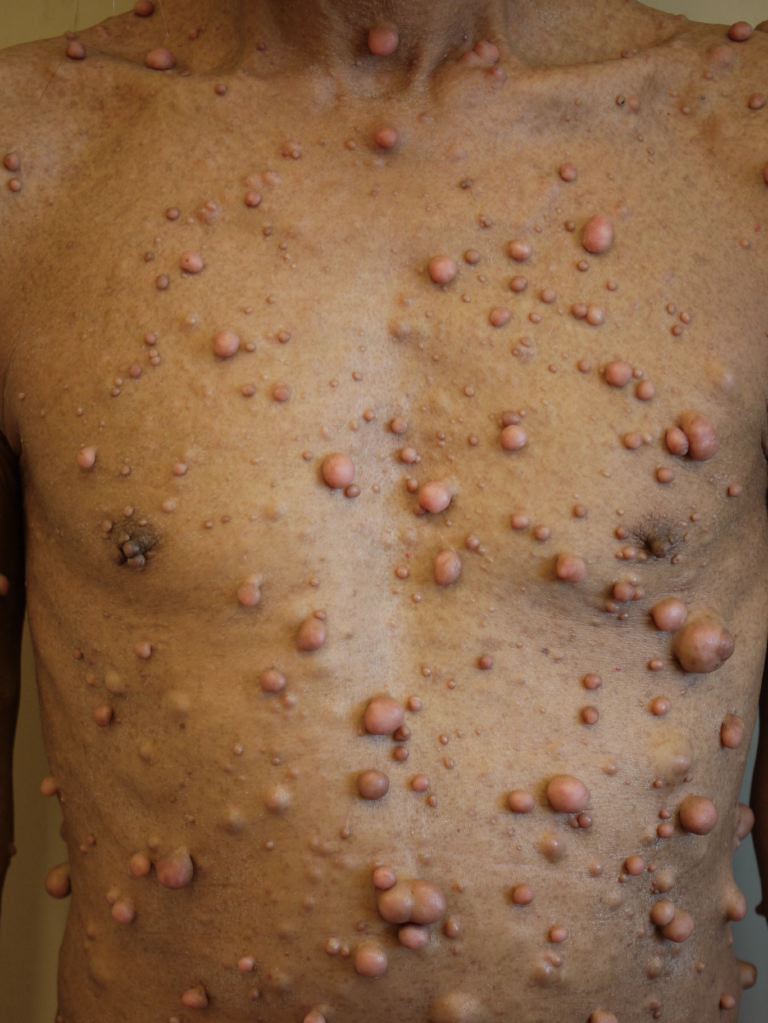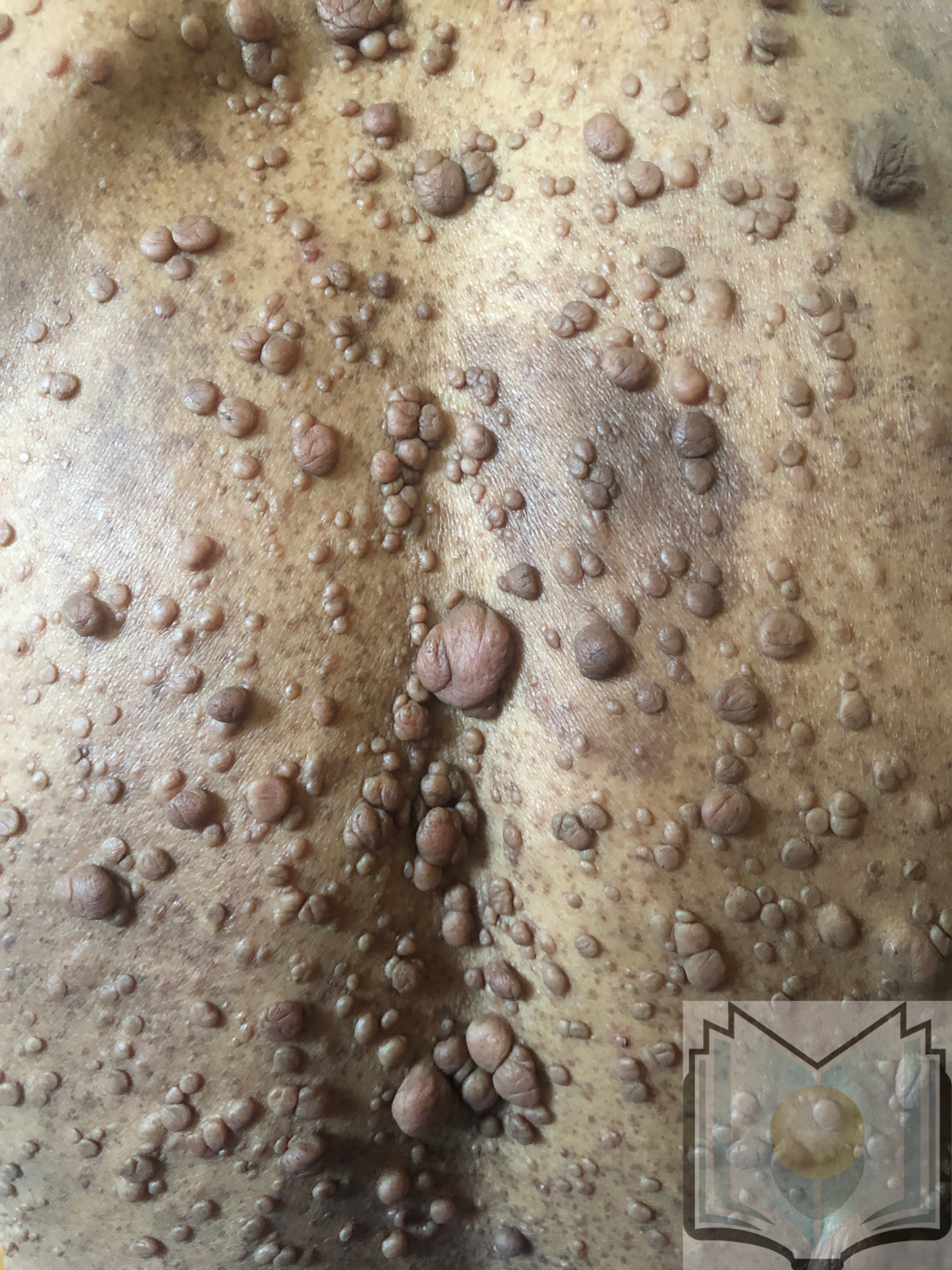[1]
Dinh CT, Nisenbaum E, Chyou D, Misztal C, Yan D, Mittal R, Young J, Tekin M, Telischi F, Fernandez-Valle C, Liu XZ. Genomics, Epigenetics, and Hearing Loss in Neurofibromatosis Type 2. Otology & neurotology : official publication of the American Otological Society, American Neurotology Society [and] European Academy of Otology and Neurotology. 2020 Jun:41(5):e529-e537. doi: 10.1097/MAO.0000000000002613. Epub
[PubMed PMID: 32150022]
[2]
Gürsoy S, Erçal D. Genetic Evaluation of Common Neurocutaneous Syndromes. Pediatric neurology. 2018 Dec:89():3-10. doi: 10.1016/j.pediatrneurol.2018.08.006. Epub 2018 Aug 10
[PubMed PMID: 30424961]
[3]
Mota M, Shevde LA. Merlin regulates signaling events at the nexus of development and cancer. Cell communication and signaling : CCS. 2020 Apr 16:18(1):63. doi: 10.1186/s12964-020-00544-7. Epub 2020 Apr 16
[PubMed PMID: 32299434]
[4]
Neuropathology for the neuroradiologist: Antoni A and Antoni B tissue patterns., Wippold FJ 2nd,Lubner M,Perrin RJ,Lämmle M,Perry A,, AJNR. American journal of neuroradiology, 2007 Oct
[PubMed PMID: 17893219]
[5]
Revisiting neurofibromatosis type 2 diagnostic criteria to exclude LZTR1-related schwannomatosis., Smith MJ,Bowers NL,Bulman M,Gokhale C,Wallace AJ,King AT,Lloyd SK,Rutherford SA,Hammerbeck-Ward CL,Freeman SR,Evans DG,, Neurology, 2017 Jan 3
[PubMed PMID: 27856782]
[6]
Li P, Wu T, Wang Y, Zhao F, Wang Z, Wang X, Wang B, Yang Z, Liu P. Clinical features of newly developed NF2 intracranial meningiomas through comparative analysis of pediatric and adult patients. Clinical neurology and neurosurgery. 2020 Jul:194():105799. doi: 10.1016/j.clineuro.2020.105799. Epub 2020 Mar 19
[PubMed PMID: 32229353]
Level 2 (mid-level) evidence
[7]
Kalamarides M, Essayed W, Lejeune JP, Aboukais R, Sterkers O, Bernardeschi D, Peyre M, Lloyd SK, Freeman S, Hammerbeck-Ward C, Kellett M, Rutherford SA, Evans DG, Pathmanaban O, King AT. Spinal ependymomas in NF2: a surgical disease? Journal of neuro-oncology. 2018 Feb:136(3):605-611. doi: 10.1007/s11060-017-2690-7. Epub 2017 Nov 29
[PubMed PMID: 29188529]
[8]
Mautner VF, Nguyen R, Kutta H, Fuensterer C, Bokemeyer C, Hagel C, Friedrich RE, Panse J. Bevacizumab induces regression of vestibular schwannomas in patients with neurofibromatosis type 2. Neuro-oncology. 2010 Jan:12(1):14-8. doi: 10.1093/neuonc/nop010. Epub 2009 Oct 20
[PubMed PMID: 20150363]
[9]
Ferner RE, Bakker A, Elgersma Y, Evans DGR, Giovannini M, Legius E, Lloyd A, Messiaen LM, Plotkin S, Reilly KM, Schindeler A, Smith MJ, Ullrich NJ, Widemann B, Sherman LS. From process to progress-2017 International Conference on Neurofibromatosis 1, Neurofibromatosis 2 and Schwannomatosis. American journal of medical genetics. Part A. 2019 Jun:179(6):1098-1106. doi: 10.1002/ajmg.a.61112. Epub 2019 Mar 25
[PubMed PMID: 30908866]


